The clean energy transition: why you want it, the sickos who don’t want you to have it, and how we’re gonna get it anyway
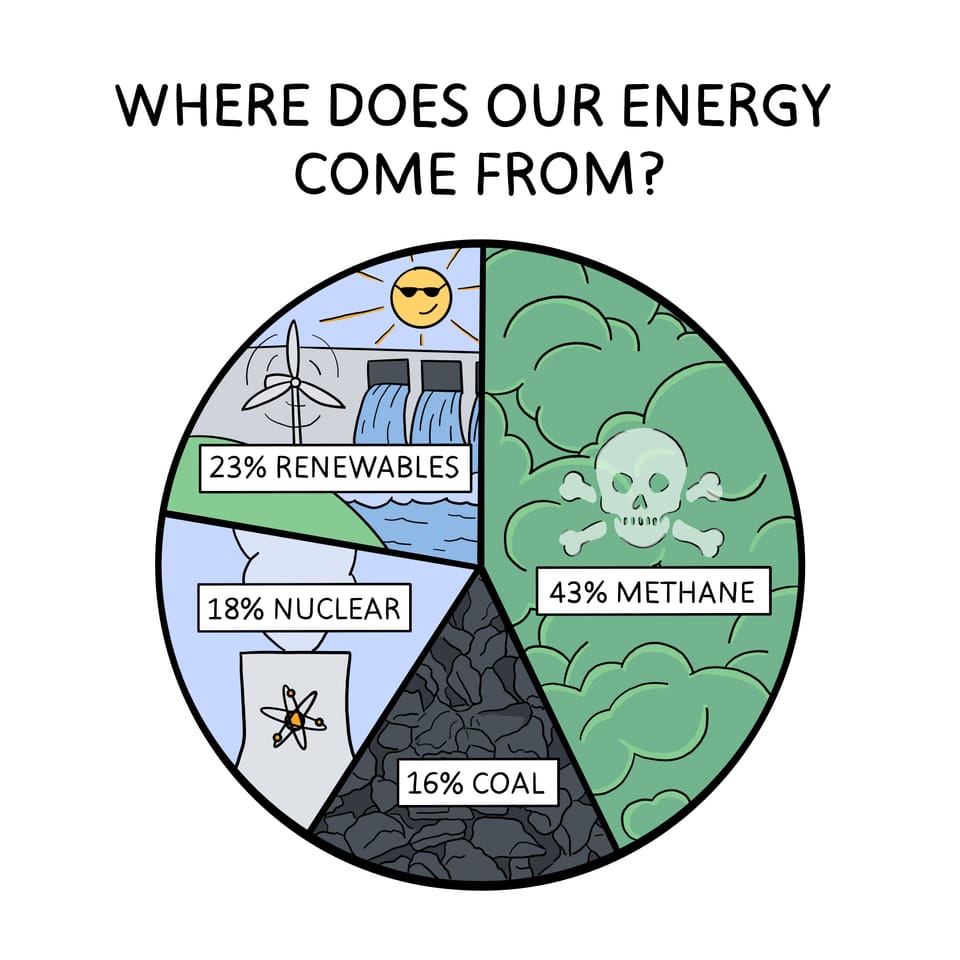
I’m not here to lecture you about climate change. If you’re reading this, chances are you already get the gist: burning coal, oil, and poisonous 'natural' gas nonstop since the Industrial Revolution has made our planet hot and sick. The situation is bad, the timeline to fix it short.
But nobody wants to hear about that, including me. It’s too depressing! Fixating on the bad news makes the future feel hopeless, when in fact it is not; it is anything but.
I’d much rather tell you about all the Cool Shit happening right now in the mind-blowing world of clean energy technology.
Cool Shit that I’m willing to bet you’ve never heard of. Cool Shit that, outside of a small band of nerds, activists, and early adopters, nobody is talking about.
Most of us regular folk aren’t even aware we’re in the early stages of a clean energy revolution. Or that the most amazing technological innovation today is not taking place at software startups in Silicon Valley but in labs and manufacturing plants across the country and around the globe, where some of the smartest people alive are racing against the clock to invent and improve the renewable energy technology that just might save us from extinction. These brilliant minds have been at it for decades now, and much of what they’ve produced is absolutely wild.
You want to see some examples of Cool Shit, I know.
But first, I ought to tell you: I’m no climate expert. I’m just an out-of-work writer who’s become obsessed with learning about the state of clean energy in 2025. It’s a complex subject, but it’s important and interesting and it's come so far in just the past few years. I bet I can break it down for you in a way you’ll appreciate.
After six months of studying this stuff like it’s my job, here are my three biggest takeaways:
1. We are so, so close to living in a world in which everyone on earth has access to an infinite supply of clean, renewable energy. A world without wars fought over oil and gas. A world without air pollution, which kills 7 million people every year. And, yes, a world that sees the reversal of climate change. The technology we need to do all of that already exists, and it’s continually improving—getting cheaper and more powerful—every single day. Transitioning off fossil fuels to clean energy is not just the right thing to do, it’s the prudent thing. If America committed full-heartedly to the clean energy transition, we’d hit our climate goals while saving, very conservatively, $12 trillion over the next two decades alone.
2. Unfortunately, there are members of our government—Republicans and Democrats alike—working hand-in-hand with Big Oil and Big Gas billionaires (a group I call “Big Dystopia”) to destroy any chance we have of realizing our infinite clean energy future. The Trump administration is killing renewable energy projects, pausing research funding, literally banning the words “climate change” from public view. What’s worse, Big Dystopia is not the only obstacle in our way: we’re also gonna need to massively overhaul our energy grid and fundamentally correct how our for-profit utility companies are run.
3. We are on the brink of a new energy crisis that’s going to affect every last one of us. A perfect storm is brewing: an exponential increase in demand for electricity from AI companies, data centers, and consumers, combined with an entrenched commitment to building more “natural” gas pipelines and power plants, combined with the huge costs of repairing damage from annual wildfires and superstorms, collectively mean that utility bills have begun to spike throughout the country with no sign of letting up. Maybe you’ve never thought much about your utility bill. Well, you’re about to. Unless we act fast, the situation will get dire.
Way, way more of us need to learn about, talk about, and get directly involved with making sure the clean energy revolution succeeds. Knowledge is power, after all, and there are concrete actions we can take right now that will profoundly impact our future. The world only changes for the better when the people loudly demand it.
Throughout my research, I never found the sort of guide I was looking for: one designed specifically for green energy newbies. You know, something that wasn’t too technical. That didn’t assume I remembered what an electron is, or that I’d already memorized a hundred clean energy acronyms. I needed a resource that made learning about climate tech fun.
So I decided to make my own.
Green Juice is a weekly newsletter about the clean energy revolution that anyone can understand. There are custom illustrations by Dr. Aarati, interviews with experts, audio recordings of every post, product recommendations, curated resources, and meaningful actions you can take that will have a material impact on saving our planet.
But I intend to focus on the Cool Shit. I want to get you as hooked on this stuff as I am. ‘Cause I’ve found the more I learn about green energy, the less afraid of climate change I become.
So, without further ado… here’s a preview of some Cool Shit:
- Advanced Geothermal: We’ve learned to convert the heat generated by the earth’s molten core—an unlimited resource nearly as hot as the surface of the sun—into zero-emissions electricity on a huge scale; one startup’s gotten so good at this so quickly, they might be able to generate enough energy to power the whole United States within a decade.
- Heat Pumps with Thermal Batteries: Do you know about heat pumps? They’re an amazingly efficient way to heat and cool your home by moving heat rather than generating it. Heat pumps are one of the main ways we’re going to decarbonize our buildings. In a future post, I’ll get into all the different models and the latest innovations, like adding a thermal battery to the mix, which lets you store extra heat in a water tank to use during the times of day when electricity is the most expensive.
- Vehicle-to-Grid and Curbside EV charging: Two great new reasons to get an electric vehicle: earn passive income by selling electricity from your car’s battery back to the power grid, and start charging your EV curbside in New York City and elsewhere by plugging it into a cute little post on the sidewalk.
- Electrolysis + Nanotechnology + AI: Electrolysis is not just for hair removal: it’s actually the process of zapping stuff with electricity to induce a chemical reaction. One company has figured out how to do this with nanotechnology: they’re putting literally millions of random elements on a chip the size of a thumbnail and zapping them to create molecules that have never existed in the world before. Then they feed the results to an AI that evaluates whether any of the newly minted materials have the potential to replace some of the rare minerals and metals that much of green energy tech requires.
There’s so much more Cool Shit to talk about—electric planes and trains! Virtual power plants! Closed-loop hydro!—but this post is getting long.
When you're ready to dive in, start with a post I wrote that provides some necessary context for why and how we got here.
It’s called—
Everything you need to know about the clean energy transition if you’re not sure you know anything
I’ve done my best to make it not boring. I hope you’ll check it out.
Because I believe getting folks pumped about our infinite clean energy future is critically important, all the content on Green Juice will be free, now and forever.
That said, if you want to support what we're doing (you may recall I don’t have a job) you can become a paid subscriber by clicking the subscribe button, or you can stuff some cash in the tip jar.
Finally, I have one last crucial ask. Please, please share Green Juice. Share it with friends, family, coworkers, crushes, acquaintances, and internet strangers. I know how sharing stuff—especially climate stuff—can feel uncomfortable. But I’m going to need financial support to keep this going for as long as I plan to. And I promise to do everything I can to make it worth your while.
Yours to the end. Or maybe the beginning?
-Jon
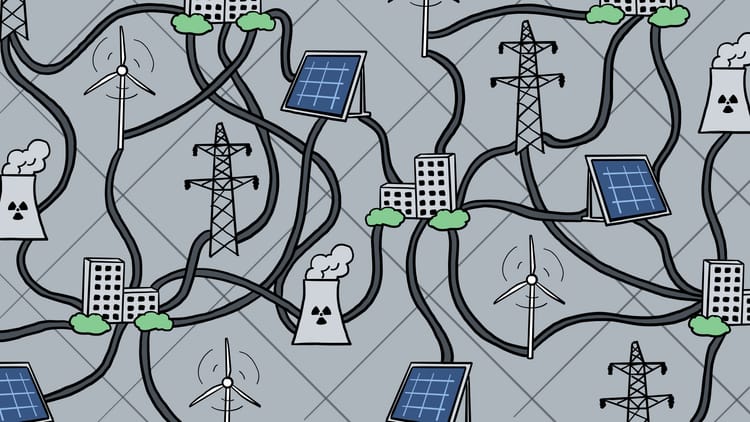
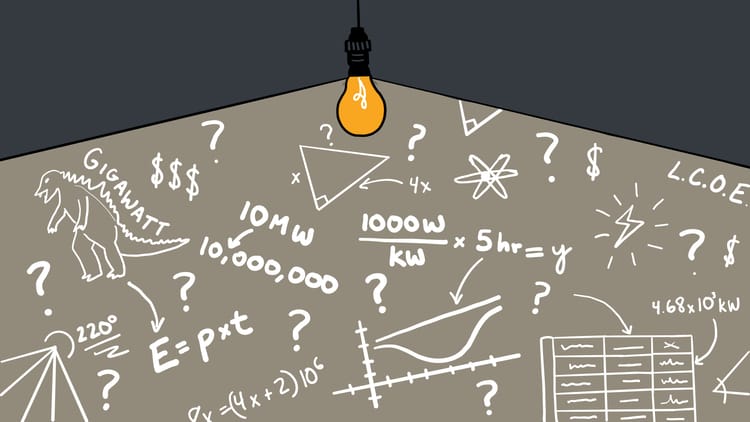
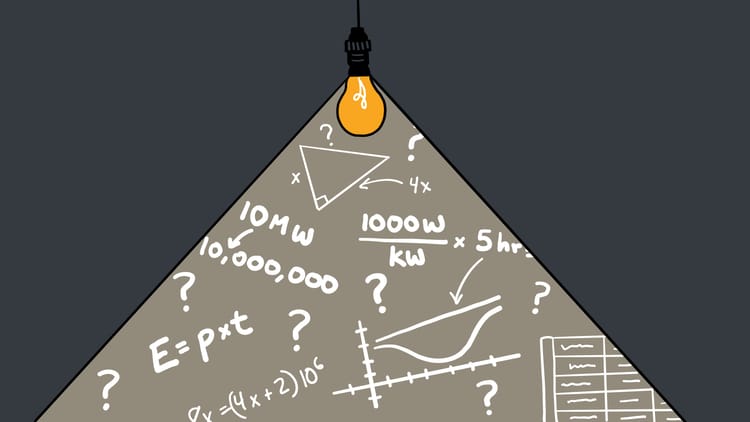
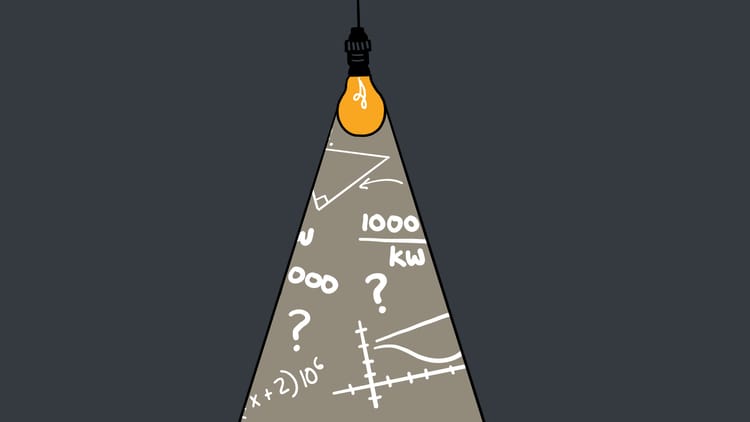
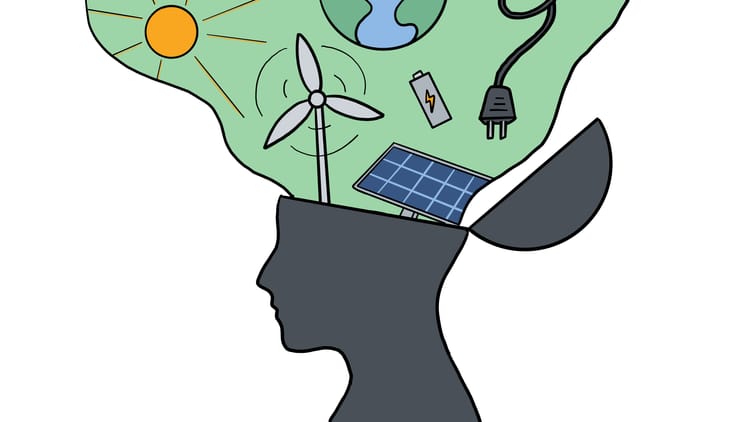
Member discussion